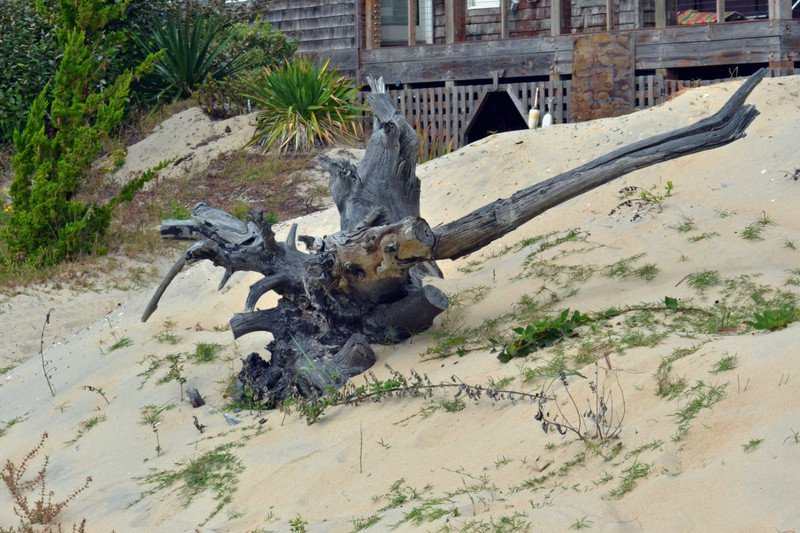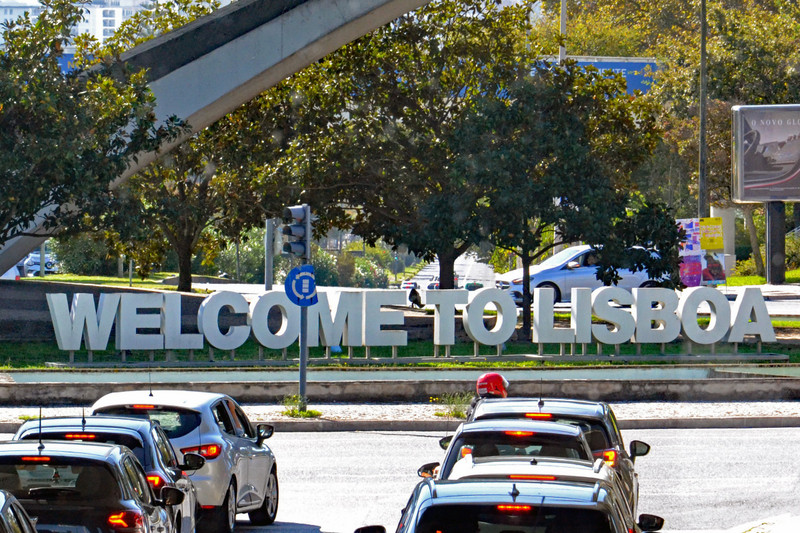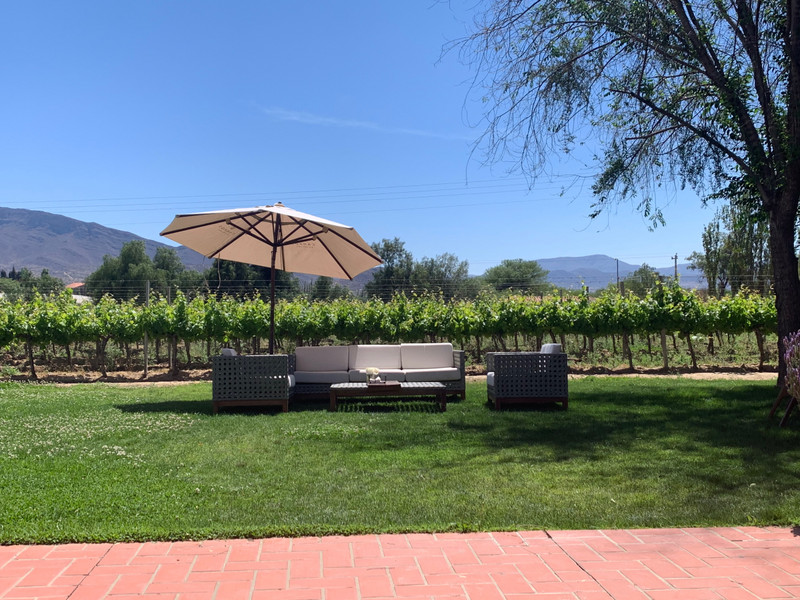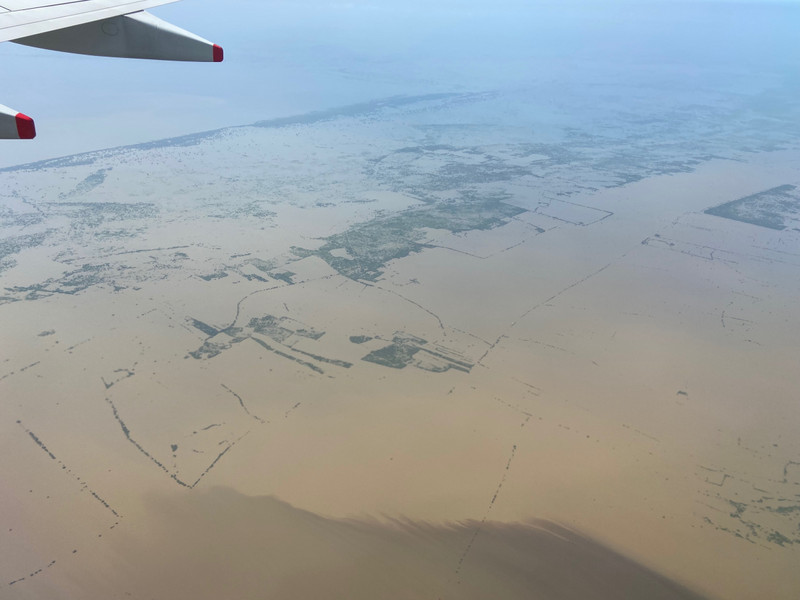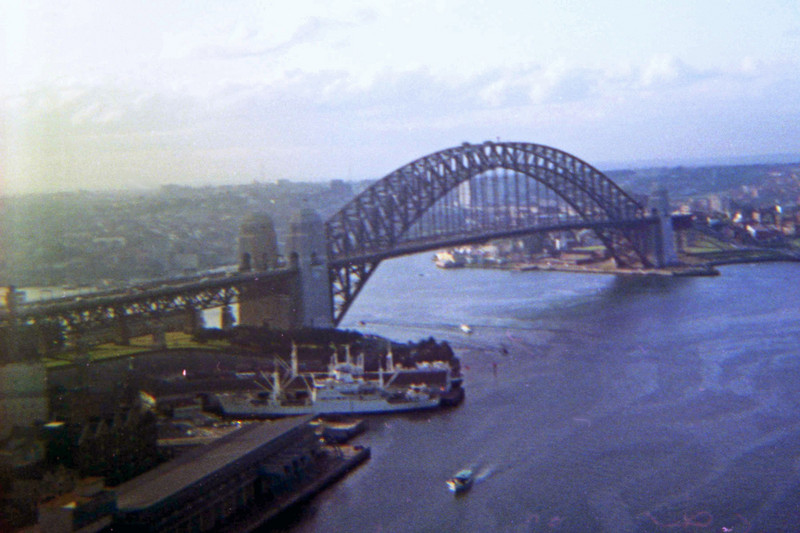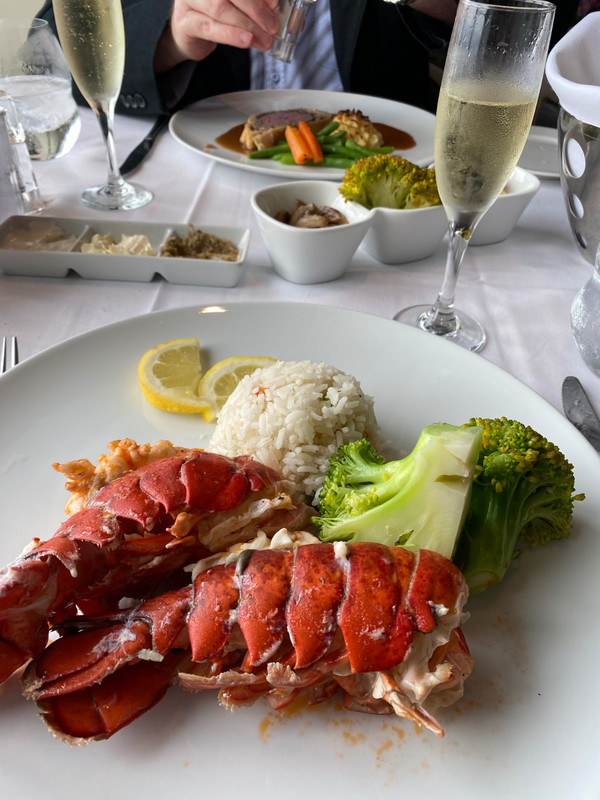On Wednesday, we drove north along the Outer Banks to reach Corolla. Nearby Carova Beach is famous for the wild horses that roam the seaside dunes at will.
The only way to see the horses is to drive over the beach. Vehicles that are not four wheel drive or vehicles need to let air out of their tires in order to navigate the sand. Rather than do that, we booked a tour to see the horses. We booked through Wild Horse Adventure Tour in Corolla, They provide Hummers configured to carry eleven passengers. On our tour, there were seven.
The Hummer followed North Carolina 12 as far as it went, until the pavement gave way to beach sand. Officially, this is known as the North Beach Access Road, but it is really simply a beach. There are, however, a lot of motor vehicles driving on it. We began to look earnestly for the sight of horses. There were none on the beach, so by the time we reached the settlement of Carova, we turned inland. Again, we were driving on sand dunes. There are no paved roads here. Houses and vacation rentals are built seemingly at will
The Banker Horses are descendants of horses abandoned by Spanish explorers in the 16th century. Native Americans initially used them as pack animals. By the 19th century, roundups were held and some horses were used by farmers. Once occupying the entire Outer Banks, the herd has been pushed north as development of the islands progressed. By the 1980s, horses were wandering on highways and even into supermarkets. Today the herd numbers about 120 to 150 horses which are monitored and kept within the Currituck National Wildlife Refuge. Our Humvee driver could name the individual horses we saw.
We spent about an hour and a half driving on the beach and among the dunes and houses. Ten horses in all were observed, including one colt. They were grazing on dune grass. The have been eating dune grass for so long that they cannot digest other types of typical horse food. The beach was also alive with flocks of birds, notably Royal Terns. Another former station is here, too, now a real estate office.
the other sights of Corolla. Perhaps because it was midweek and out of season, many restaurants were closed. Corolla Cantina was open. Here I enjoyed Currituck Club Quesadillas, a blending of Mexican and Carolina flavors.
After lunch there were more Corolla sights to see. At Historic Corolla park is The Whalehead Club mansion. The house, actually a holiday hunting lodge, was built for Mr. and Mrs. Edward Colling Knight in 1922 to 1925. This area of the Outer Banks, despite its isolation before roads were built, was a bird and waterfowl hunting area for the Several shooting clubs and hunting once existed at the Currituck Banks. The area is under the Eastern Flyway for migrating birds. The Knights used the house until their deaths in 1936. After that, it became a school and a Coast Guard barracks and then fell into disuse. It was acquired by Currituck County in 1992 and restored as a historic house museum. The style is a mix of American Craftsman and Art Nouveau influences. Inside, one finds an Art Nouveau grand staircase, but craftsman windows that would not be out of place in a Frank Lloyd Wright house. Visitors go on a
tour. There is a descriptive sheet about each room. Servants quarters are to one side of the house and include the kitchen and a gun room. A servant was responsible for cleaning and storing the hunting rifles. (The corridors are much narrower in the servants area than they are in family living area). The exterior architecture is eclectic, too. It looks partly Bungalow, partly Cape Cod and, to me, partly Cape Dutch. There is a nice view of Currituck Sound from the rear porch.
Nearby is the Currituck Beach Lighthouse. Completed in 1875, Currituck Beach Light Station was the last of three major lighthouses to be built on the Outer Banks. It is sometimes called Whalehead Light because it is near a long sand dune which mounds up at one end in a large hump resembling a whales head.
